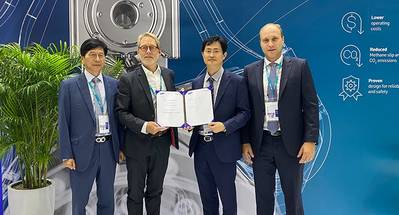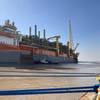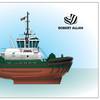WinGD and Samsung Heavy Industries to Cooperate on Ammonia Fuel Applications
Swiss marine power company WinGD and South Korean shipbuilder Samsung Heavy Industries (SHI) have agreed to cooperate on future fuel vessel applications with ammonia-fueled engines. The memorandum of understanding, signed during the Gastech conference in Singapore this week, indicates a strong intention on the part of SHI to install WinGD’s X-DF-A dual-fuel ammonia engines on forthcoming newbuild vessels.
The cooperation will include preparing X-DF-A for integration with wider ammonia fuel systems and auxiliary machinery across a range of vessel designs, including oil tankers, containerships and ammonia carriers. The project is in line with WinGD’s previously announced timeframe of bringing X-DF-A ammonia engines into service from Q1 2025.
Haeki Jang, CTO, Samsung Heavy Industries, said, “Working with WinGD to prepare its ammonia engines for integration with newbuild projects in key vessel segments will ensure that SHI can offer customers the future fuel vessel solutions they need to meet their decarbonization targets.”
Volkmar Galke, Director Sales, WinGD, said, “This collaboration offers WinGD the opportunity to participate in the future fuel preparations of one of the world’s biggest and most respected builders of high-quality vessels. The aim is to prepare engine and vessel designs as well as fuel system integration specifications that will lead to X-DF-A engines being deployed on a wide range of SHI-built, ammonia-fuelled vessels.”
WinGD is due to begin validation of its ammonia-fuelled engine concept on single and multi-cylinder test engines, in Winterthur and Shanghai, later this year. The validation tests follow combustion concept testing that began in 2021, in concert with simulation and rig tests to understand the emissions characteristics and injection requirements of ammonia fuel.
The X-DF-A, like its methanol-fuelled counterpart X-DF-M, will operate on a high-pressure Diesel-cycle combustion process, with liquid ammonia fuel injection supported with a low portion of pilot fuel.














